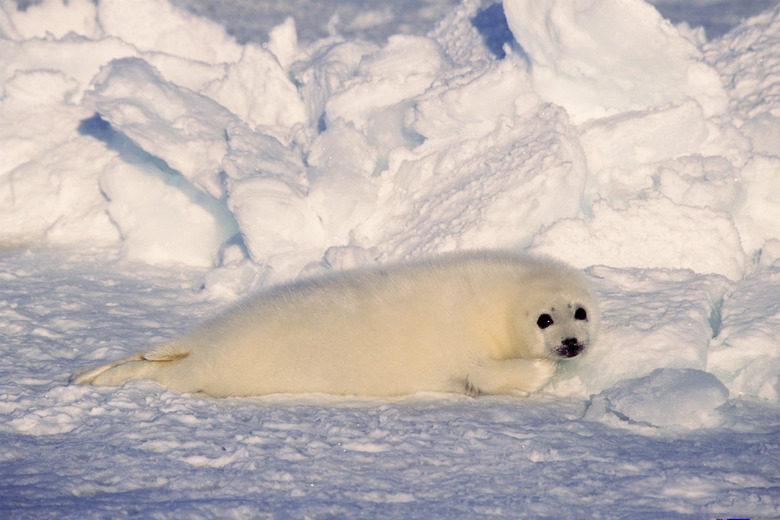Seals Vs. Walruses
Seals and walruses are sea-dwelling mammals that share many of the same identifying characteristics. It should come as no surprise, then, that they are often confused with each other. While there are many similarities between seals and walruses, their differences are also substantial. Those who are interested in learning more about seals and walruses can start by studying their scientific classifications, habitats, appearance, and dietary differences.
Scientific Classification
Scientific Classification
Seals and walruses are both considered part of the scientific order Pinnipedia and are called pinnipeds for their fin-like flippers. Seals and walruses can be further identified by their families, with walruses falling into the Odobenidea family and seals falling into either the Phocidae or Otaridae family. Earless — or true seals, as they are sometimes called — are part of the Phocidae family, while eared seals — or fur seals — and sea lions are part of the Oraidae family.
Habitat
Habitat
Walruses have a large arctic habitat, which may range from northeastern Canada to Greenland, and northern seas near Alaska and Russia. In general, walruses live on pack ice, though they may move to rocky islands if ice is not available or as temperatures increase. According to SeaWorld, walruses spend up to two-thirds of their time in water — which preferably has a rocky bottom and is no more than 80 feet deep. Like walruses, most seals prefer an arctic habitat, and make the Arctic seas their home — living on ice pack or in frigid waters. Some types of seals live on the Antarctic continent, thriving in an arctic habitat where walruses do not venture. A small subset of this animal — including the harbor seal, caspian seal, and Hawaiian monk seal — live in warmer climates. The harbor seal, for example, can be found along the coastlines of southern California, Mexico, New Jersey and France.
Appearance
Appearance
Walruses are rounded, "fusiform" mammals that feature pink and brown wrinkled skin, long white tusks, and large, flat front and rear flippers with small, inconspicuous claws. Walruses generally range in size from 7.5 to 11.5 feet, and may weigh as much as 1.5 tons. Walruses do not have external ear flaps — and while many types of seals are also devoid of external ear flaps, some — called eared seals — do feature this characteristic. Depending on their specific subspecies, seals may come in a variety of shapes and sizes — however, they are all torpedo-shaped, feature rear flippers that help them move through the water, sharp carnivore teeth and front flippers that feature sharp, powerful claws. Unlike walruses, there are no types of seals that have tusks. While some seals may weigh as little as 110 pounds, others may top the scales at over 5,000 pounds — in general, however, most seals are smaller creatures than walruses.
Diet
Diet
Walruses are carnivores — and eat a variety of medium and small-sized sea life. In fact, clams, mussels and other "bottom-dwellers" make up the majority of a walrus' diet — though they may also eat young seals if their preferred food supply is limited. Typically, most walruses migrate to the south end of their habitat in the winter for mating, and the north end in the summer — and as their habitat changes, the prevalence of certain preferred food types may increase or decrease. While some types of seals — such as the harbor seal — also eat shellfish, other types of seafood, including flounder, herring and rockfish, are included in their diets. As with walruses, seals generally migrate during the breeding season, resulting in some variations to their diets.
References
- Seaworld: Scientific Classification
- National Oceanic and Atmospheric Association: Pinnipeds, Sea Lions, and Walruses
- National Oceanic and Atmospheric Association: What Should I Know About Seals?
- Defenders of Wildlife: Basic Facts About Walruses
- SeaWorld: Diet and Eating Habits
- SeaWorld: Physical Characteristics
- SeaWorld: Habitat and Distribution
Cite This Article
MLA
Vera, Kathryn. "Seals Vs. Walruses" sciencing.com, https://www.sciencing.com/seals-vs-walruses-8132149/. 24 April 2017.
APA
Vera, Kathryn. (2017, April 24). Seals Vs. Walruses. sciencing.com. Retrieved from https://www.sciencing.com/seals-vs-walruses-8132149/
Chicago
Vera, Kathryn. Seals Vs. Walruses last modified August 30, 2022. https://www.sciencing.com/seals-vs-walruses-8132149/
